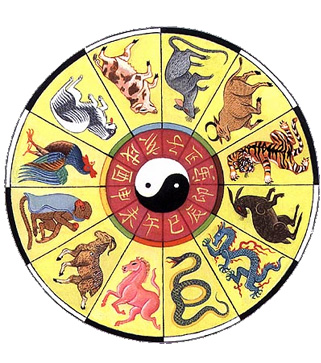Chinese calendar
The Chinese calendar is a lunisolar calendar, incorporating elements of a lunar calendar with those of a solar calendar. It is not exclusive to China, but followed by many other Asian cultures as well. In most of East Asia today, the Gregorian calendar is used for day-to-day activities, but the Chinese calendar is still used for marking traditional East Asian holidays such as the Chinese New Year, the Duan Wu festival, and the Mid-Autumn Festival, and in astrology, such as choosing the most auspicious date for a wedding or the opening of a building. Because each month follows one cycle of the moon, it is also used to determine the phases of the moon. In China, Greater China and Sinosphere, the calendar is also known as the "Agriculture / Agricultural / Agrarian calendar" (/) while the Gregorian calendar is known as the "Common / Worldwide calendar" (/) or "Western calendar" (/). Another name for the Chinese calendar is the "Yin calendar" (/) in reference to the lunar aspect of the calendar, whereas the Gregorian calendar is the "Yang calendar" (/) in reference to its solar properties. The Chinese calendar was also called the "Old calendar" (/) or Traditional calendar (?/?) as opposed to the "New calendar" (/), i.e., the Gregorian calendar, was adopted as the official calendar. For more than two thousand years, since the time of Emperor Wu of Han, the month containing the winter solstice has almost always been the 11th month. (This means the new year starts on the second new moon after the winter solstice unless there is an 11th or 12th intercalary month, in which case it starts on the third new moon.) A calendar using this new year is often referred to as "Xia calendar" (/), following the Shiji which states that under the Xia Dynasty, t

e year began on the second new moon after the winter solstice. At times under some other dynasties in ancient China, the month with the winter solstice was the 12th or the 1st month. The year 2012 in the Chinese calendar is the Year of the Dragon. It began on January 23, 2012 and will end on February 9, 2013. According to traditional texts, some form of the calendar has been in use for almost five millennia. Based on archaeological evidence some form of it has been in use for three and a half millennia. The Chinese year beginning January 23, 2012 is reckoned in the seldom-used continuously numbered system to be 4709, 4649, or 4710, depending on the epoch used. The earliest evidence of the Chinese calendar is found on the oracle bones of the Shang Dynasty (late second millennium BC), which seem to describe a lunisolar year of 12 months, with a possible intercalary 13th, or even 14th, added empirically to prevent calendar drift. The Sexagenary cycle for recording days was already in use. Tradition holds that, in that era, the year began on the first new moon after the winter solstice. Early Eastern Zhou texts, such as the Spring and Autumn Annals, provide better understanding of the calendars used in the Zhou dynasty. One year usually had 12 months, which were alternately 29 and 30 days long (with an additional day added from time to time, to catch up with "drifts" between the calendar and the actual moon cycle), and intercalary months were added in an arbitrary fashion at the end of the year. These arbitrary rules on day and month intercalation caused the calendars of each state to be slightly different, at times. Thus, texts like the Annals will often state whether the calendar they use (the calendar of Lu) is in phase with the Royal calendar (used by the Zhou kings).